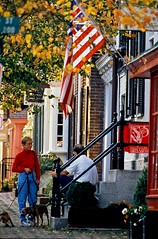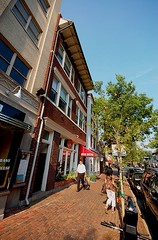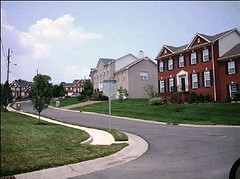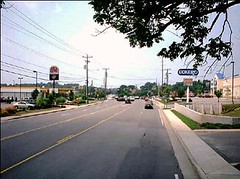Utah study links walkable neighborhoods and fitness

Posted August 1, 2008 at 1:26PM
More and more, this blog seems to be about walkable communities. I didn’t plan it that way, exactly, but from complete streets to obesity to Google’s walking directions to America’s most walkable cities, I seem to have this recurring theme. And now there’s another study on the issue to validate my premise that smart growth neighborhoods are good for us.
In particular, a new study from the University of Utah, to be published in the September issue of the American Journal of Preventive Medicine, linked the body mass index (BMI) of nearly a half million Salt Lake County residents to 2000 Census data. 
 The researchers found that “residents were at less risk of being obese or overweight if they lived in walkable neighborhoods-those that are more densely populated, designed to be more friendly to pedestrians and have a range of destinations for pedestrians.”
The researchers found that “residents were at less risk of being obese or overweight if they lived in walkable neighborhoods-those that are more densely populated, designed to be more friendly to pedestrians and have a range of destinations for pedestrians.”
According to the University’s press release, the study found that a man of average height and weight weighed 10 pounds less if he lived in a walkable neighborhood versus a less walkable neighborhood. A woman of average size weighed six pounds less. This is, of course, fully consistent with the findings of previous research that analyzed different data sets, including the comprehensive SMARTRAQ study.
The implications were succinctly summarized by Ken Smith, one of the study’s authors: "It is difficult for individuals to change their behavior," he says, "but we can build environments that promote healthy behavior."
To an extent, this means building like we used to. The study also found that the most walkable neighborhoods – those with the best fitness results – tended to be built before 1950. The report on the study in the Salt Lake Tribune notes that the researchers found that adding 10 years to the age of a neighborhood decreased obesity risk by 8 percent for women and 13 percent for men.
Study co-author Barbara Brown told the Health Behavior News Service that “older neighborhoods often have bundles of design features, such as tree-shaded sidewalks, convenient small shops, bus stops, places to work and attractive destinations that give residents a reason to walk.”
Most recent development, by contrast, has been designed to facilitate automobile travel for a population believed to be little interested in walking for anything other than recreation. That may have been true for a time, but the surging interest in urban living suggests that as a nation we are now looking for neighborhoods built around pedestrian amenities, transportation choices and convenience.
Salt Lake County mayor Peter Corroon gets it: "Starting in the 1950s, we went away from the concept of walkable communities . . . We have to go back to where we were and create a model to building where you can live, work and recreate all within the same community."

